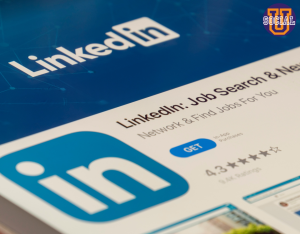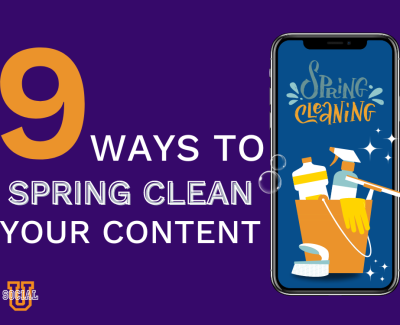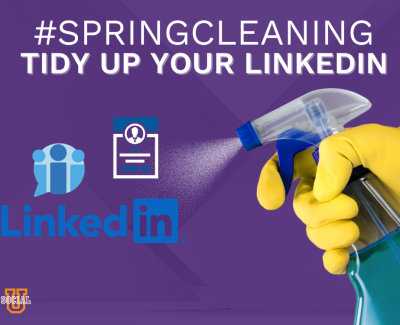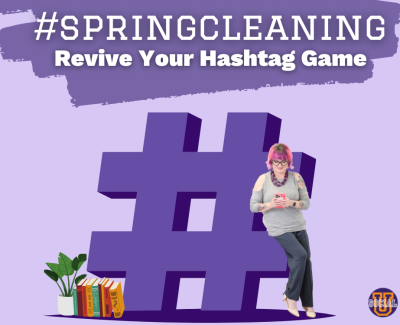
Unless you run a social media company, you probably don’t have the bandwidth to be on every social media platform. To remain consistent, you need to only be on the ones where you’ll get the most bang for your buck. How do you choose? Let’s look at the stats.

Facebook is still the big guy with the most users. 7 in 10 US adults are on Facebook. Over 65 is the fastest-growing demographic on the site. 51% of US teens between 13 and 17 are also on Facebook. 74% of high-income earners are on there. There are over a billion and a half users every day. It’s hard to ignore numbers like these.
88% of users are on the platform to stay in touch with friends and family. The highest traffic days are Wednesday and Thursday. Stories has 3 million active viewers daily. 53% of adults don’t understand how their newsfeed displays posts. 94% of revenue from Facebook ads comes from mobile, so if your ads aren’t optimized for mobile you are seriously missing the boat.
85% of Facebook users watch videos without the sound on. Make sure your videos have captions. Speaking of video, users are 4 times more likely to watch a live video than a recorded video.
What does all this mean? You have to be on Facebook. Almost every business in the world, regardless of who they are or who they sell to, needs a presence on Facebook. It carries the biggest weight. The most people are there. Google recognizes it as a resource. It’s where most people are going to go when they start the process of looking for information about your company. When you hear people say that no one is on Facebook anymore, don’t believe it. If you’re a business owner you need to be on Facebook.
Instagram is owned by Facebook and has over a billion active users. Compared to Facebook, it’s a younger audience. More than half of their users are under 34 years old. It’s the second most preferred app for teens. The largest demographic on Instagram is 18 to 24-year-old males. 6 in 10 users log in at least once a day. It’s the second most used social media site. The average user spends 53 minutes per day there compared to Facebook’s 58 minutes.
90% of users do follow a business account. 83% of users say they use it to discover new products or services, 81% use it to research new products or services, and 80% use it to decide whether to buy that new product or service. That’s massive. Over 500 million accounts use stories every day and after seeing a product or service described on Instagram 79% of users will search for more information. 37% will visit the retail store and of that 37%, 50% of people will buy something. That’s huge.
What does that mean for you? If you have a younger audience who is more visual, you need to be on Instagram. If you are going to be on Instagram you have to make sure you allocate enough time not just for posts but for stories and reels as well. Instagram recently announced they are no longer primarily a photo-sharing platform. They’re shifting to content creation, influencers, and video. They’re pushing video hard. If you are a business owner and you haven’t started using reels, I highly recommend it. If your audience is under 35, I highly recommend it.

Twitter isn’t our favorite because it requires a massive dedication of time. You have to tweet multiple times per day to even make a splash in the pond. Twitter has 330 million active users. That seems like a lot but it’s not as much as some of the platforms that have a much more targeted audience. Tweets fly by. It’s like standing next to the river and watching the water flow. The average user session is only 4 minutes so you don’t have long to make that splash.
Twitter tends to be an older audience with a 2:1 male to female ratio. That audience is further divided into 18 to 29-year-olds and 35 to 55-year-olds as the largest groups. If you are in a male-dominated field, such as sports, you definitely need to be on Twitter. If you have a primarily male audience, Twitter is the place to be. Need to market your beard oil? Try Twitter.
Most Twitter users log on once per month and only 40% will purchase something after seeing it on Twitter. Not great stats to spend a lot of time there unless your target audience falls into that primarily male demographic. I will say that 80% of users are affluent millennials, which means they do have disposable income. 93% of Twitter community members are open to brands getting involved if they do it the right way. It can’t just be done. It has to be done well.
In summation, if you are marketing to a male audience and have the time to dedicate to Twitter, go for it. It has to be done well and the minimum is 3 tweets per day. Ideally, it should be closer to 10 tweets per day.
Pinterest is a very overlooked platform. Many businesses don’t even bother with it but it’s one of our favorites because of the activity. 71% of Pinterest users are female. Pinterest reaches 83% of women between 25 and 54, so basically all of the women. That same group of women accounts for 80% of the buying decisions in the US household.
If you’re trying to sell something specifically to women or a family, Pinterest is the place to be. The women making the purchasing decisions are there. 85% of women use it to plan their life moments such as weddings, buying a house, and big trips, compared to only 44% who use Instagram and Facebook. 58% say it helps them with shopping and purchasing decisions.
80% of women between the ages 18 and 64 with children use Pinterest. That means 8 out of 10 moms are pinners. 40% of dads use it too. 52% of millennials use it every month. It’s second only to Instagram for millennials. 89% of pinners use it for inspiration for their path to purchase. 77% say they use it to discover new products or brands. 98% report trying new things after seeing them on Pinterest. That’s an insane number. That’s almost every single person on the site. 80% of those people think content from brands is useful, even if it’s an ad. The average session is around 14 minutes and is usually on mobile. High-income households are twice as likely to use Pinterest than low-income households.
The bottom line is that women with money and kids are on Pinterest. If that’s your audience, that’s where you need to be. They also consider shopping to be a priority. Pins that show a product or service are 70% more likely to drive sales.
When we started getting serious with Pinterest and pinning our blogs each week, we saw our traffic really pick up and at least 7 out of 10 of our top pins each month are from our own content. It’s driving traffic to our website. It totally works and we are big fans.

LinkedIn has 675 million monthly viewers. It is pretty evenly split between male and female. Over half of Americans with a college education are on there. 49% of the Americans on there make more than $75,000 per year.
LinkedIn has 15 times as many content impressions as they do job postings. A common misconception is that if you’re not looking for a job you don’t need to be on LinkedIn. You really do. You’re 60% more likely to engage with a coworker. It’s a great way to foster community in your company.
As with all platforms, thanks to Covid engagement has increased in the last year. Most of that engagement will come from your employees. It’s a great place for your employees to become your brand ambassadors and help you sell your products or services to other businesses and professional people.
4 out of 5 people on LinkedIn drive business decisions. CEOs, VPs, and more are on LinkedIn. 94% of business-to-business marketers use it for content marketing. Out of the almost 700 million users, only 3 million post content at least once per week. That’s such a tiny percentage. You’re much more likely to be seen on LinkedIn if you are one of the contributors.
If you have a business and you market to other businesses or professionals, you need to be on LinkedIn. Also, Google favors LinkedIn. If you have a customized URL for your profile and people Google you or your company, LinkedIn will normally pop up sometimes before even your own website.
YouTube
In case you haven’t heard us say this in the last 5 minutes, “video, baby”. Video is huge on every single platform but YouTube is still the big boy. It’s the second largest search engine behind Google. It’s the second-largest platform behind Facebook. 85% of internet users in the US watch videos every single month. YouTube receives more than 2 billion users each month, almost 80% of the US. It plays more than 1 billion hours of video each day. That’s massive.
50% of consumers say they’d like to see more content from a business or brand. Marketers use it as a professional marketing tool. 70% of consumers say they’ve been influenced to make a decision based on video they’ve seen. Video marketers get 66% more qualified leads every year. 93% of marketers say they’ve landed a new customer thanks to a video on social media.
A lot of sites, possibly including your own website, need a place to house videos. Where do you put it? YouTube. The average user spends 88% more time on a website with video. 72% of people would rather learn about your product through video than read about it. Users are 95% more likely to remember a call to action after seeing a video compared to only 10% reading it in text.
The average YouTube user checks out 9 pages every time they log on. Live streams have increased 45% in the last year, probably in large part due to Covid. 50% of decision-makers use YouTube to research purchases and 70% will buy from a brand they’ve seen on YouTube.
In 2021, if you have not embraced video into your marketing plan, it is time. People spend time on YouTube to research. You can break out on YouTube when you might not be able to break out on Facebook. What’s the difference? YouTube feeds people similar content. If someone searches how to fix their air conditioner, YouTube will feed them all the videos related to those keywords, so your video may very well come up. That’s why keywords are so critical on YouTube. Facebook doesn’t work that way. If you don’t know the name of the company and the way they have it listed on Facebook, you can’t find it.
TikTok

There aren’t a ton of stats on TikTok yet because it’s pretty new. It has 80 million monthly active users in the US. It’s been downloaded over 2 billion times. It has 689 million global users. It’s 60% female and 40% male. It has a tendency to attract a younger audience. 60% are between the ages of 16 and 24. 26% are between the ages of 25 and 44.
Ocean Spray, a brand that is over 80 years old, saw 15 billion impressions in a single month because of 1 viral video. There was a skateboarder on his way to work drinking Ocean Spray cranberry juice from the carton with the label on it and he started a trend. The song playing in the background was Dreams by Fleetwood Mac. Because people stitched, dueted, and shared that video, Ocean Spray got 15 billion impressions. Fleetwood Mac Dreams broke streaming records for viral videos, streaming over 8 million times in a single week.
So, does TikTok influence people? You bet it does. There are artists whose music is being downloaded because people heard it on TikTok. People are picking up cool finds on Amazon because they saw them on TikTok. (Guilty.) If you have the bandwidth and you’re already generating video for Instagram reels, you might want to consider TikTok. It’s very similar. The hashtags are similar. The duration of the videos and the formatting, it’s all similar, so take a look at it if that appeals to you.
Which Platforms Will You Choose?
Use this information to help choose your platforms but remember to stay within your bandwidth. It’s better to do 2 platforms consistently and with excellence than to do 5 inconsistently and with lower quality. Pick the ones that are most likely to benefit you and your business.



0 Comments